MXA RACE TEST: 2018 YAMAHA YZ65 JUNIOR CYCLE

Q: IS THE 2018 YAMAHA YZ65 BETTER THAN THE PREVIOUS YZ60?
A: Since Yamaha hasn’t made a YZ65 since 1983, we would assume it has improved over the last three decades. Back in 1983, the last Yamaha Junior Cycle was called the YZ60. It was air-cooled with a yellow motif. After a 35-year hiatus, Yamaha decided it was time to get back into the minibike market. If you’re saying to yourself, “Aren’t they already in the minibike market?” The honest answer is, “No.”
Yamaha has a line of entry-level mini trail bikes, but we don’t consider those race bikes, nor do we put any stock in the shaft-drive PW50 YZinger (although we love that bike). It is true that Yamaha makes a 2018 YZ85, but it is hardly new. The YZ85 package has suffered from benign neglect since 2002. Okay, we admit that it got clutch and tranny updates in 2014 and some spiffy plastic bodywork and a new cylinder and clutch lever in 2015, but those updates did nothing to advance the YZ85 against the new breed of 85cc minicycles coming from KTM, Husqvarna and TM (and to a lesser extent Kawasaki). The YZ85 is an also-ran in the world of minis.
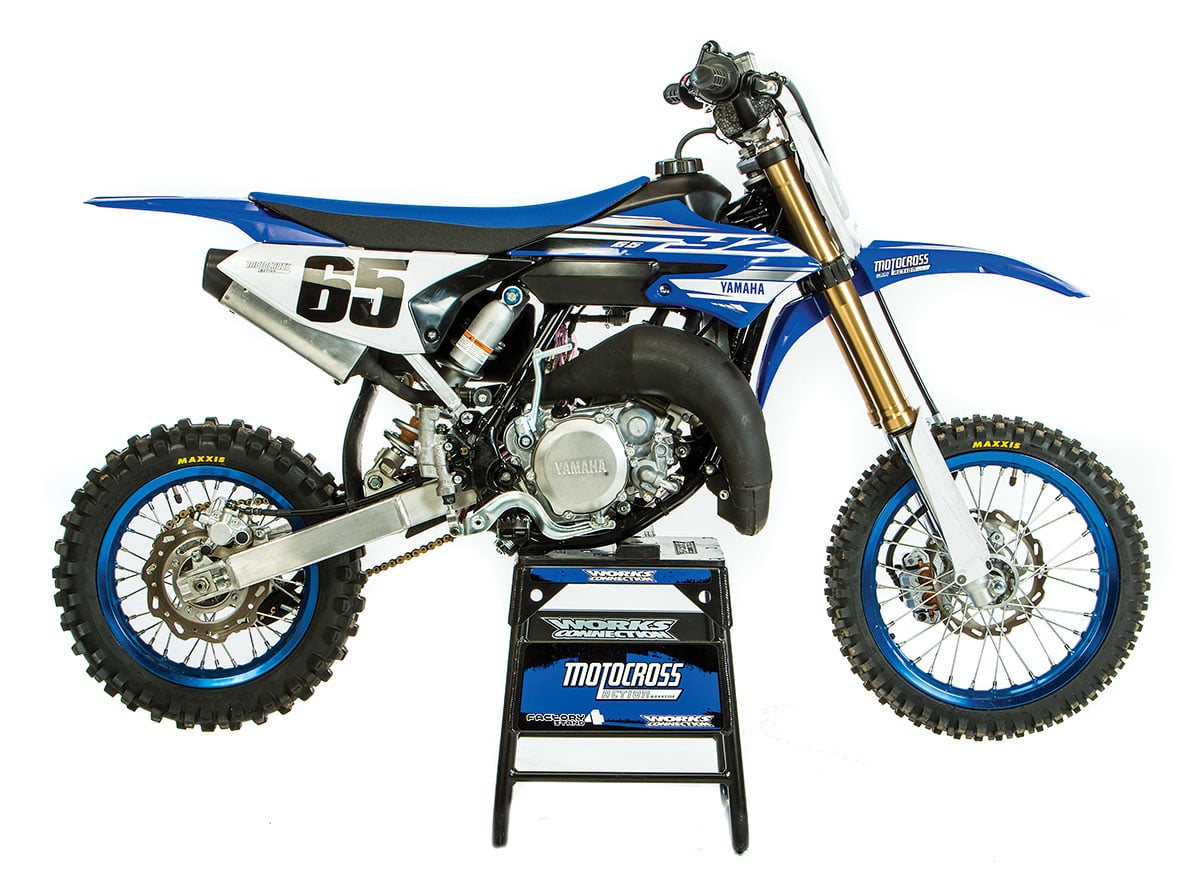
Q: WHAT IS THE GOLDEN FLEECE OF PEE-WEE, JUNIOR CYCLE AND MINICYCLE MARKETING?
A: In the motorcycle industry, the Golden Fleece of minicycle marketing is achieved by manufacturing a competitive Pee-Wee (50cc), Junior Cycle (65cc) and Minicycle (85cc) in the same model year. KTM and Husqvarna do this—nobody else does. Why is it so important to make all three sizes? It goes back to something Aristotle said over 2000 years ago. Although Aristotle was a mid-pack Vet Novice, the man understood motorcycle marketing when he said, “Give me a child until he is 7 and I will show you the man.” Boiled down to its essence, Aristotle meant that if a child establishes a bond with what he likes at a very young age, he will stick with it as he grows into manhood. Thus, if a kid starts out on a KTM 50SX at 6 years old, he will want to get a KTM 65SX when he’s 9 years old, a KTM 85SX when he’s 12 years old and a series of bigger KTMs as he ages to maturity.
Yamaha knew this at one time. They had the PW50, YZ60 and YZ80 as stepping stones to the YZ125, YZ250 and YZ400. To Yamaha’s credit, they now realize that dropping the YZ60 and refusing to update the YZinger were judgment errors. And for 2018, Yamaha is taking the first step toward rectifying the hole in Aristotle’s mini lineup with the brand-new, totally modern, YZ65 Junior Cycle.
Q: WHAT ARE SOME OF THE HIGHLIGHTS OF THE YZ65 JUNIOR CYCLE?
A: Here is a list of all the things that stuck out about the 2018 Yamaha YZ65.
(1) Footpegs. The stock YZ65 footpegs are the same pegs that come on the 2018 YZ125 and YZ250.
(2) Forks. Yamaha used 36mm Kayaba coil-spring forks. The upper fork stanchions are off the YZ85.
(3) Clutch. The YZ65’s clutch is the same as the YZ85’s. The only thing different is that it has two fewer clutch plates.
(4) Shock. The shock is a link-less design. It’s cheaper to build without linkage, and since the KTM 65SX doesn’t have linkage, Yamaha can get away with it. Only the KX65 offers a rising-rate shock linkage suspension. The biggest benefit of the link-less shock is weight savings. The biggest danger of a link-less design is that the engineers could locate the shock at the wrong angle. In short, the scalene triangle formed by the swingarm pivot, top shock mount and bottom shock mount determine the rear suspension’s rising rate. If the triangle’s geometry is off, there is nothing a customer can do other than live with it. With a link-less shock, you would have to cut the shock mount off the swingarm and remount it to change the rising rate.
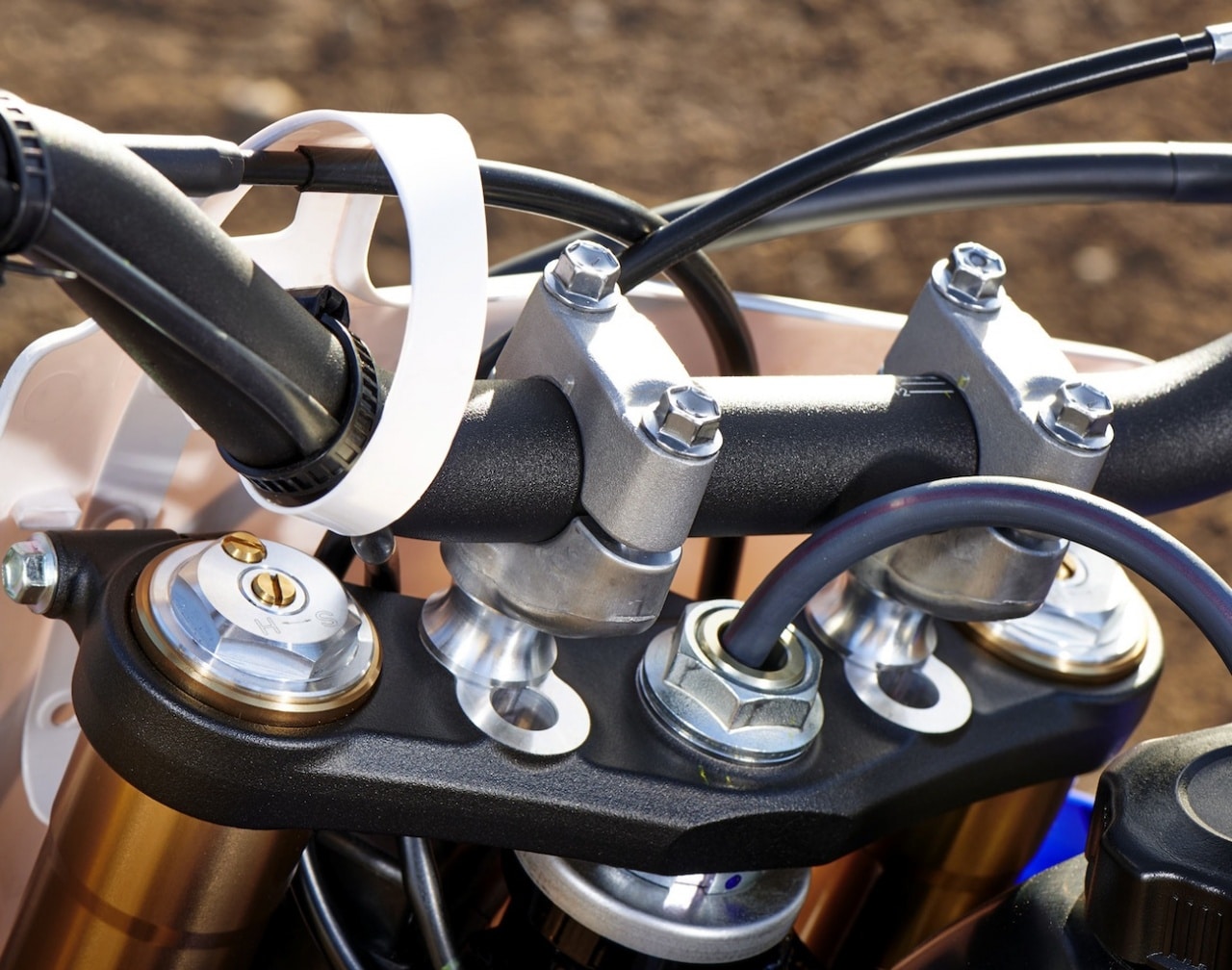
(5) Adjustability. The YZ65 offers a four-position-adjustable aluminum handlebar clamp to cater to both tall and short riders.
(6) Rims. The YZ65 comes standard with blue Excel rims.
(7) Tires. Maxxis Maxxcross SI tires are used on the front (60/100-14) and rear (80/100-12).
(8) Carburetor. The carb is a 28mm Keihin PWK.
(9) Power valve. The YZ65 engine uses a patented YPVS power valve.
(10) Transmission. The tranny has a close-ratio six-speed gearbox.
Q: HOW MUCH DOES THE 2018 YAMAHA 65 COST?
A: The YZ65 costs $4599. The KX65 is $3699. The KTM 65SX costs $4999 and the TC65 comes in at $5099.
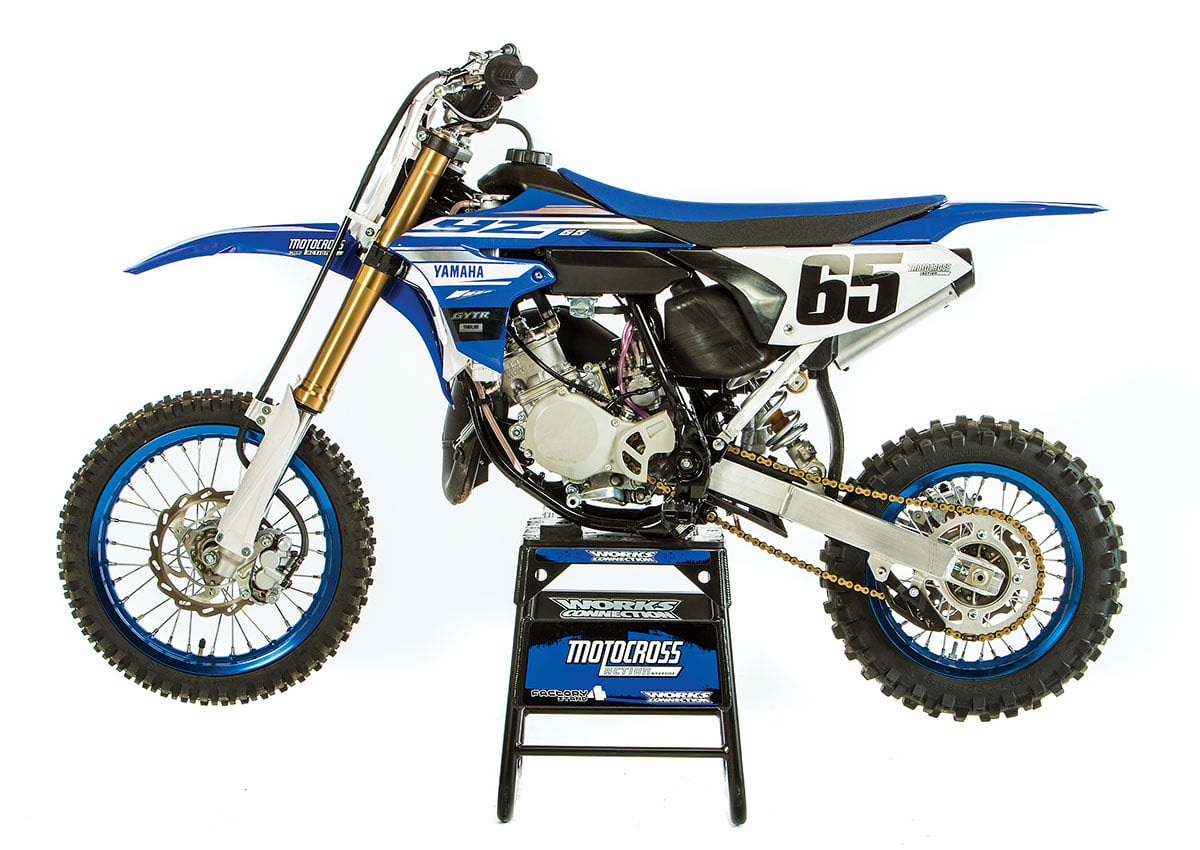
Q: IS THE 2018 YAMAHA COMPETITIVE WITH THE KTM 65SX ON THE DYNO?
A: Yes, decidedly so. The YZ65 is a strong engine. It pumps out 17.45 horsepower. In comparison, the 2018 KTM 65SX makes 16.52 horsepower and the 2018 KX65 makes 13.77. Is the YZ65 a top-end-only bike? No sir. The YZ65 offers more torque and horsepower throughout the entire curve than the 65SX. It produces one and half horsepower more from 6500 rpm to 7800 rpm and one to two more horsepower from 10,500 to 11,800 rpm. Okay, that is not totally accurate. The KTM 65SX does squeak by the YZ65 at 9100 to 9700 rpm, but not for long and not by much.
If you are wondering where the Kawasaki KX65 ranks, it isn’t even in the same league. The KX65 engine is as much as 4 horses down on the 65SX and YZ65 at virtually every point on the curve—and when you are talking about bikes that only make 17 horses, that is 25 percent less power across the board.
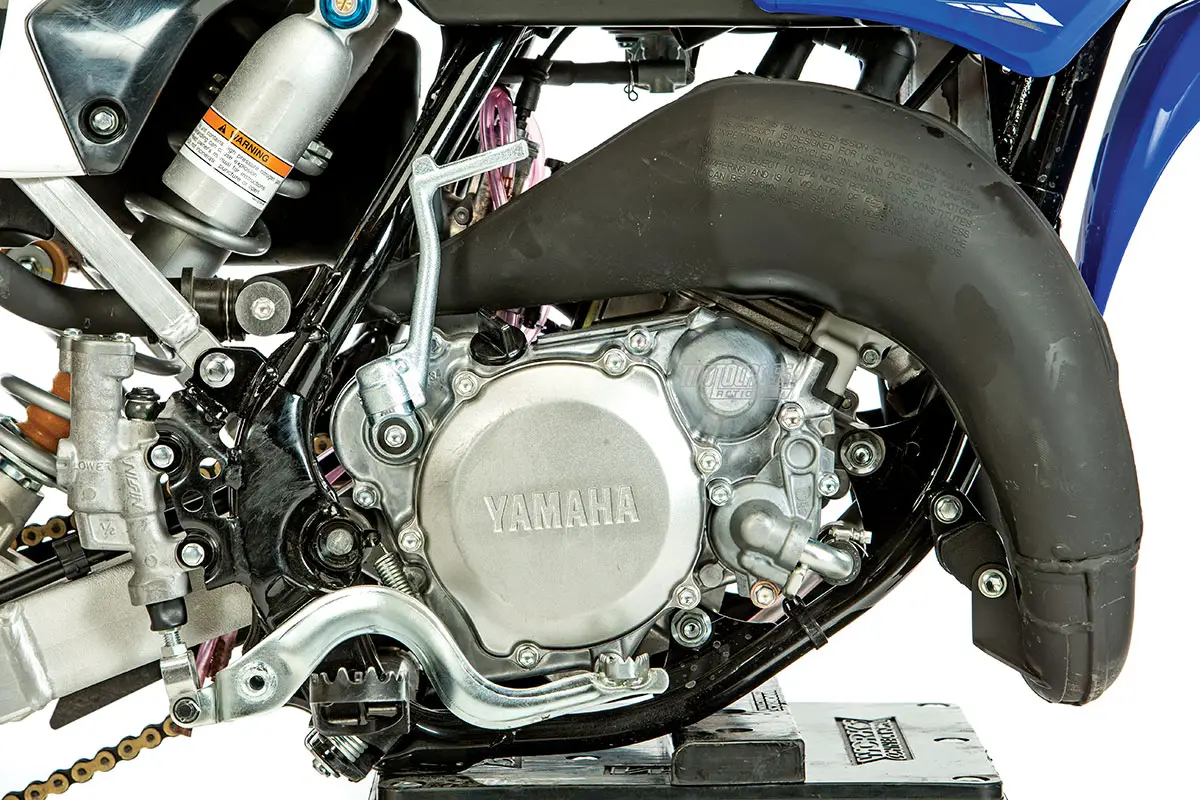
Q: HOW FAST IS THE YAMAHA YZ65 ON THE TRACK?
A: The YZ65 is more than just fast. The powerband is well-suited to any skill level. We had small, big, slow and fast test riders on our YZ65. They all said that the YZ65 was not only easier to ride but faster than their own bikes, which were, of course, Husky and KTM 65s. You can feel the big dyno numbers on the track; however, the power is not abrupt or hard to use. It has a smooth power that gets up and goes when you twist the throttle. Additionally, there is no need for Junior to fan the clutch to keep the bike on the pipe. Fast and easy to ride sounds like something Yamaha took out of KTM’s playbook.
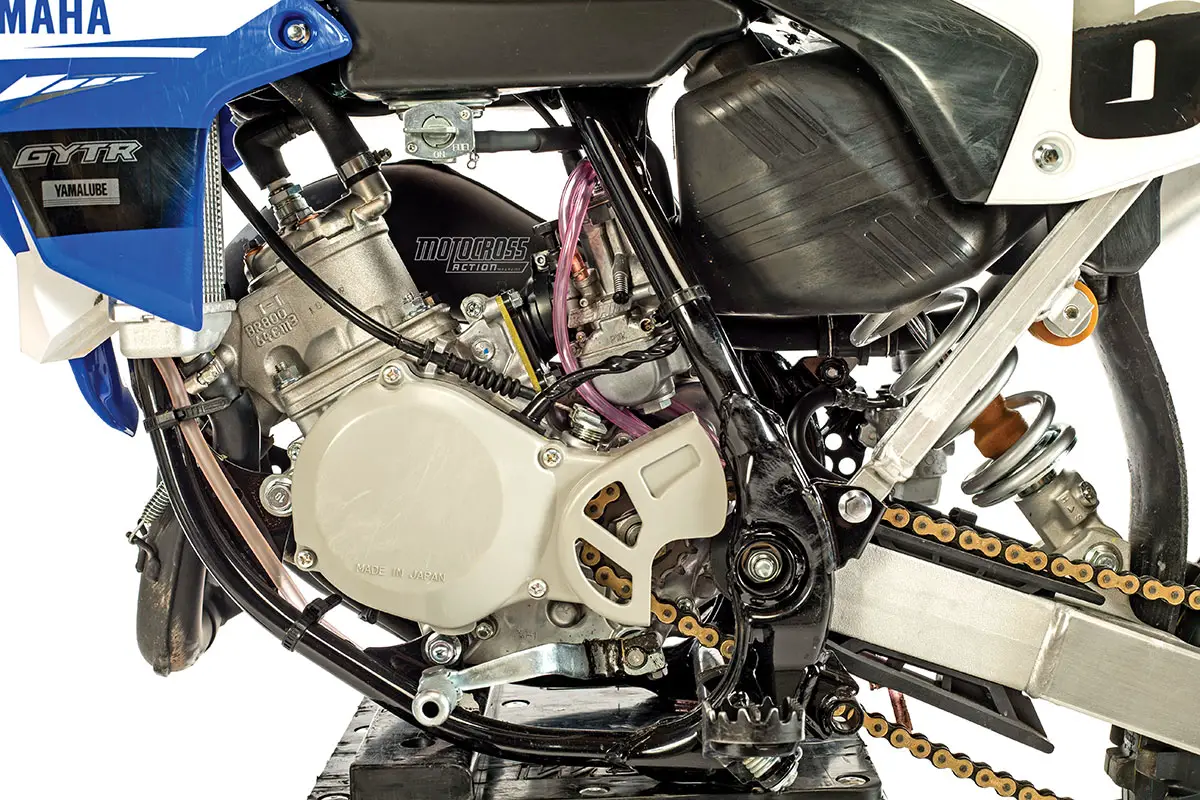
Q: HOW IS THE YZ65 SUSPENSION?
A: Testers felt like the suspension rode higher in the stroke than on the KTM and Husky. This gave them security and made them feel like they could hit bumps harder and over-jump obstacles further without fear of bottoming. Heavier and faster riders stiffened up the compression a few clicks to keep the forks from diving on the entrance to turns and in braking bumps. Smaller riders left the clicker in the stock settings. The YZ65 suspension had a plush feel, even though every test rider felt that it was stiffer through its stroke. No riders complained about the no-link rear suspension. Test riders only had good things to say about the YZ65. Sound familiar? The entire Yamaha YZ line has class-leading Kayaba components.
Q: HOW IS THE YZ65 CLUTCH?
A: It is no secret that KTM and Husky have taken over the 65cc class. Kids who have grown up on KTMs or Huskys only have experience with hydraulic clutches (even the Cobra CX65 clutch is hydraulically actuated). So, when these riders felt the YZ65’s cable-actuated clutch for the first time, they thought it was broken. They had zero experience with having play in the clutch lever or adjusting cable tension when the YZ65 clutch got hot.
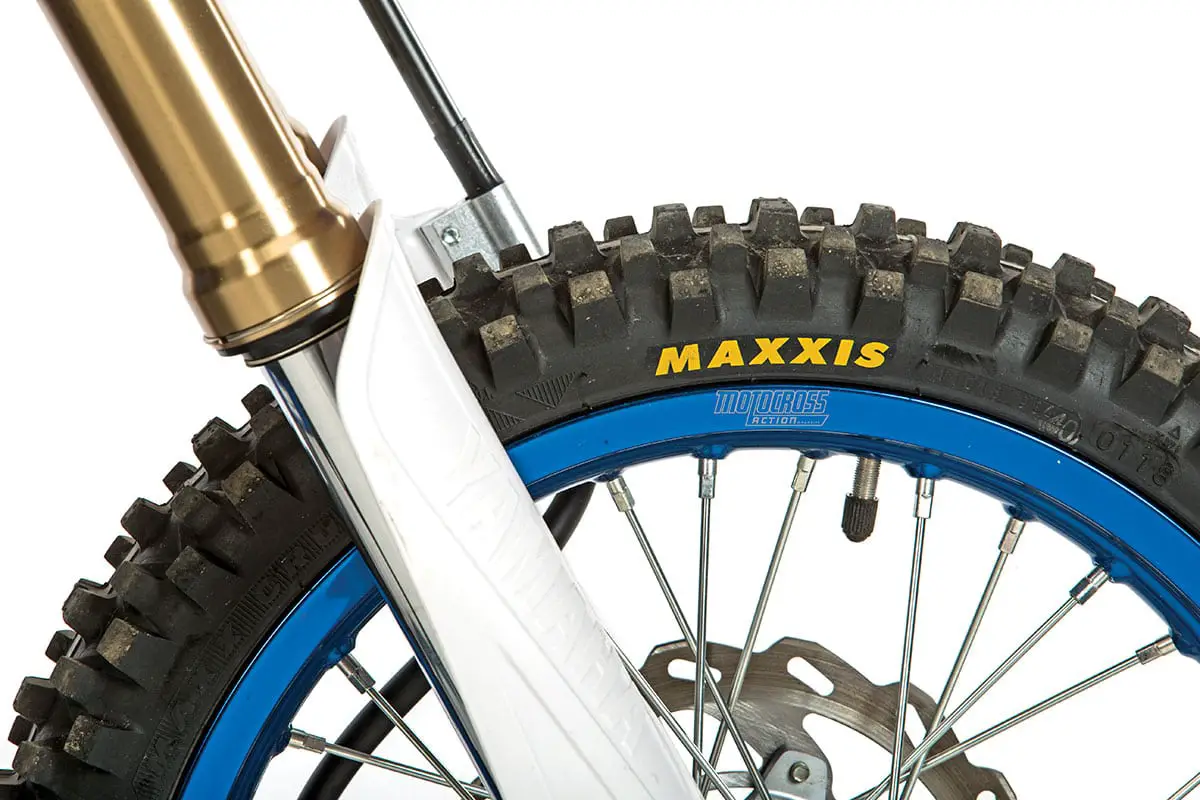
We thought that our test riders were going to have a problem with the difference in feel and need to be conscientious about keeping the lever in the proper place. To lessen issues, we took the time to run our test riders through the MXA School of Cable-Operated Clutch Use (MXASCOCU) before they rode the YZ65. It worked like a charm. And while we did have a few near disasters, as a group they grew to like the pull and feel of the YZ65’s cable clutch. Not so with the smaller kids. They didn’t like the YZ65 lever and felt it was too far away from their fingers because they were used to the adjustable levers on the 65SX and TC65.
Q: WHAT ABOUT THE BRAKES?
A: It is crazy for us to be saying this, but all our testers liked the YZ65’s dual-piston brakes better than the Formula brakes on the KTM 65SX. The Yamaha brakes stopped faster, stayed cool longer and had better modulation; however, just as with the clutch, the smaller riders protested that the brake lever was too far away from their hands.
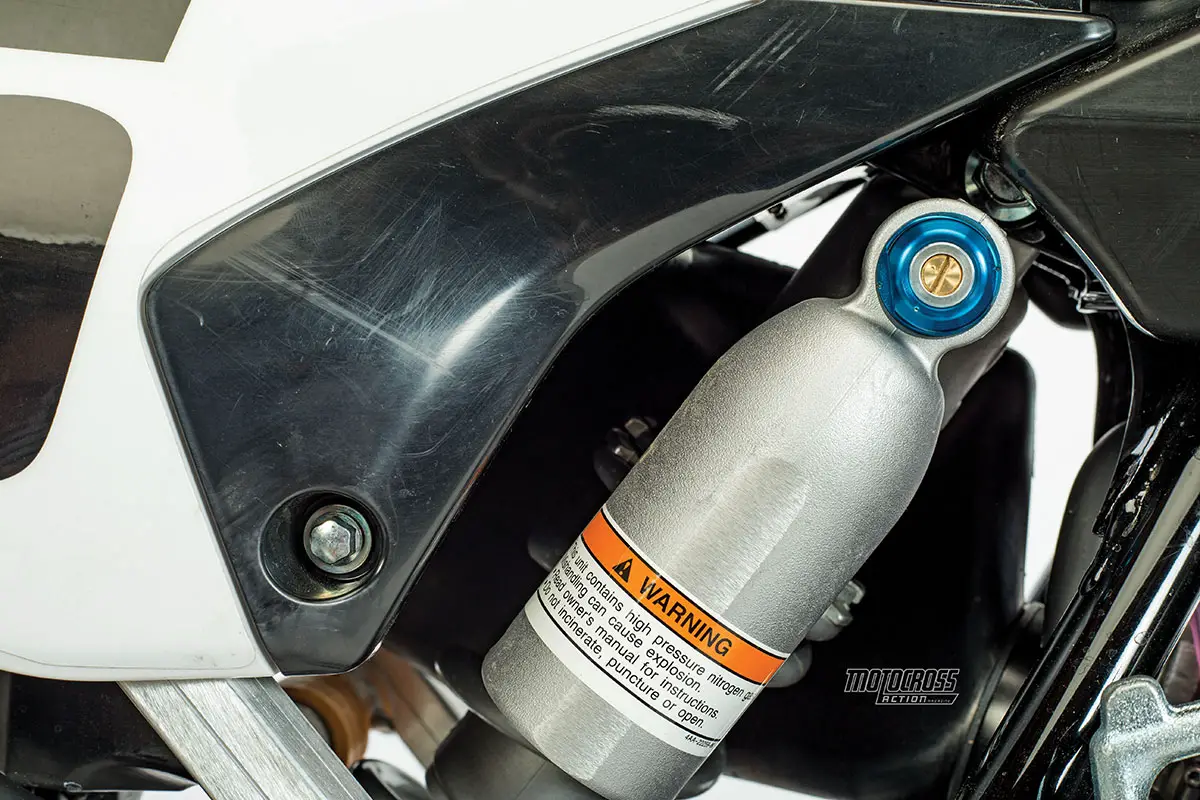
Q: WHAT DID WE HATE?
A: The hate list:
(1) Grips. These are the same grips that Yamaha runs on its entire YZ big-bike lineup. They were universally disliked by the kids.
(2) Spokes. You have to keep an eye on the rear spokes at all times; they came loose during the first few hours.
(3) Tires. Testers didn’t care for the Maxxcross SI tires; however, they last forever and are the OEM tire on the KTM 65SX and Husky TC65.
(4) Seat bolt. It took us a little while to find the seat bolt. It is hidden under the rear of the seat; you have to bend the foam up to get to the single bolt.
(5) Vibration. The YZ65 had more vibration than its Austrian competitors, although not as much as the Cobra CX65.
(6) Levers. The biggest complaint from our small test riders was that the levers were too far away for their small hands.
(7) Radiator louvers. This is a warning to check all the bolts at regular intervals. Our radiator louver bolts fell out of our factory-prepped YZ65 in the first hour.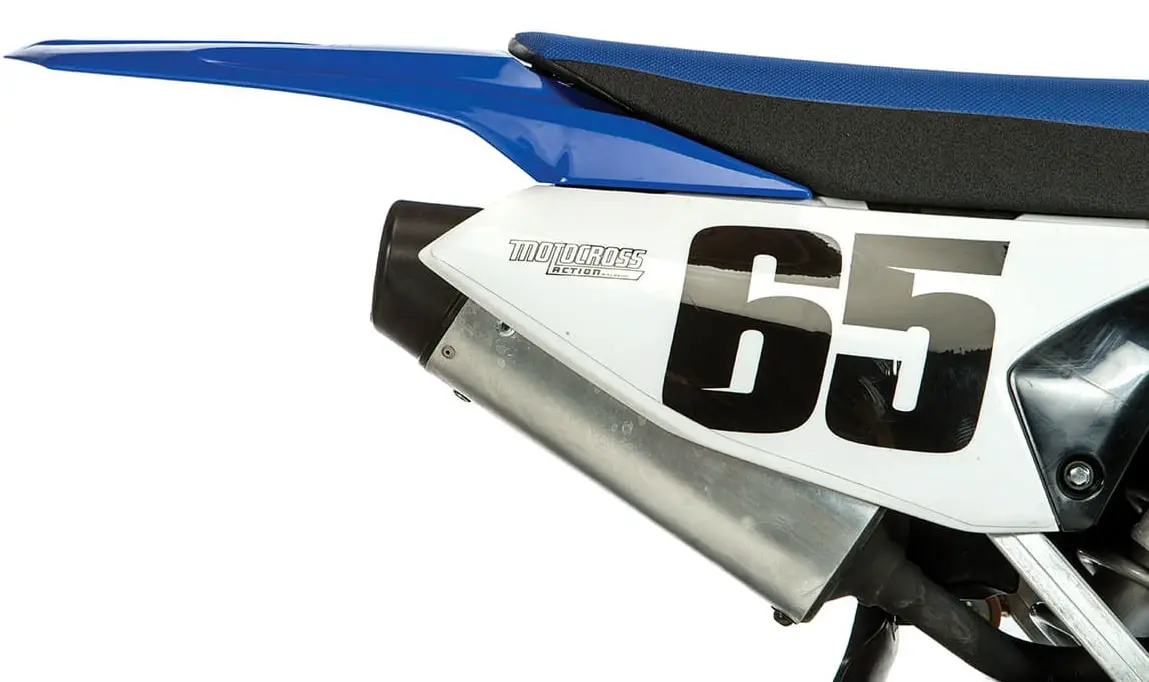
Q: WHAT DID WE LIKE?
A: The like list:
(1) Engine. This YZ65 engine is a winner. It is the most powerful and easiest-to-ride powerplant in its class. Yamaha has done a great job on its 65cc powerplant.
(2) Suspension. You can always count on Yamaha in the suspension department. The Kayaba components were great.
(3) Brakes. The dual-piston brakes stop on a dime and are better than the KTM 65SX, TC65, CX65 and KX65 brakes.
(4) Handling. Every tester loved how the YZ65 handled.
Q: WHAT DO WE REALLY THINK?
A: We can hardly wait for Yamaha to introduce a YZ50 Pee Wee. Yamaha gambled that the YZ65 would be good enough to compete with the hoard of Austrian Junior Cycles on the starting lines across America—and they drew a royal flush. Yamaha saw an opportunity and went all in. The 2018 Yamaha YZ65 has a better engine, better suspension and better brakes than its competition. It is the perfect bike for a kid transitioning from a 50cc to a 65cc—if only Yamaha can break the Aristotle effect that KTM has already set in motion.
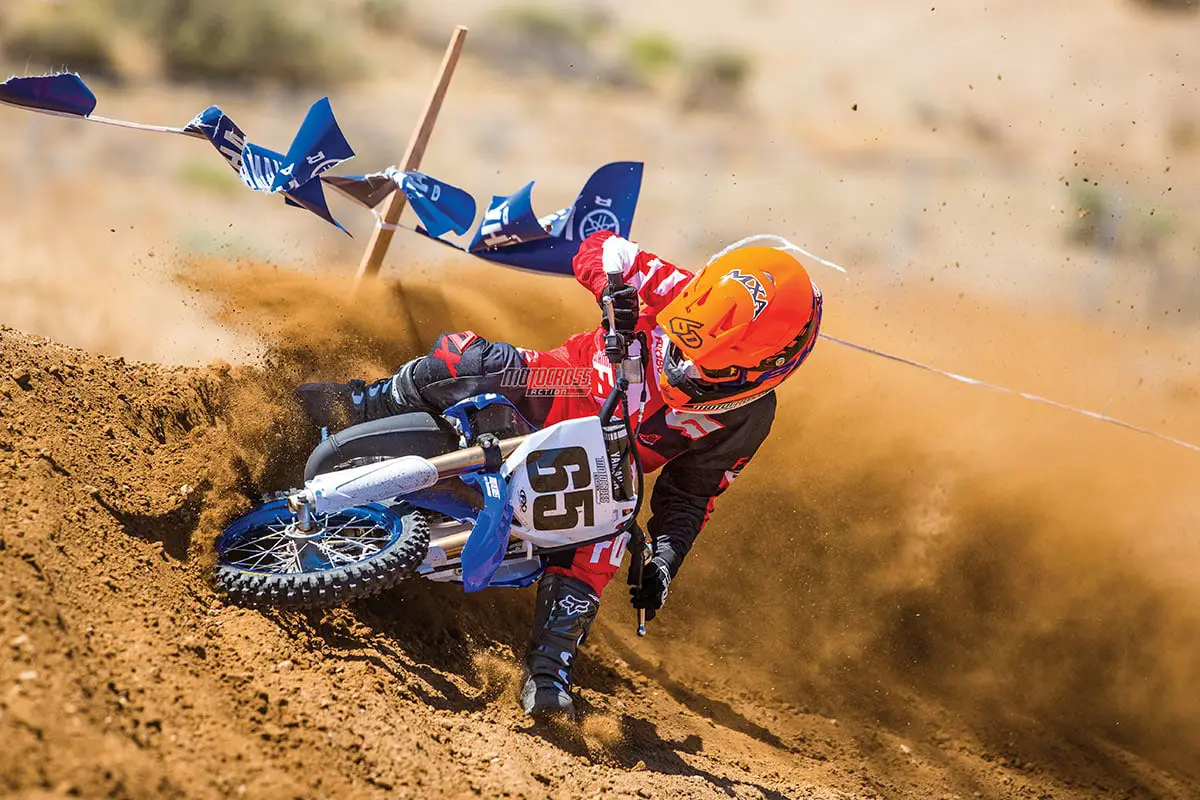
MXA’S 2018 YAMAHA YZ65 SETUP SPECS
This is how we set up our 2018 Yamaha YZ65 for racing. We offer it as a guide to help you find your own sweet spot.
KAYABA 36MM FORK SETTINGS
For the most part, our testers left the fork settings alone. Our heavier and faster riders went two to four clicks stiffer on compression but left the rebound alone. For hardcore racing, we ran this setup on the 2018 Yamaha YZ65 (stock clickers are in parentheses):
Spring rate: 0.28 kg/mm
Compression: 10 clicks out (12 clicks out)
Rebound: 10 clicks out
Fork-leg height: 5mm up
KAYABA SHOCK SETTINGS
Every test rider liked the stock setting on the stock shock. It is a good base setting for most riders. For hardcore racing, we ran this setup on the 2018 Yamaha YZ65 (stock clickers are in parentheses):
Spring rate: 4.0 kg/mm
Race sag: 80mm (75–85mm)
Lo-compression: 10 clicks out
Rebound: 10 clicks out
YAMAHA YZ65 JETTING
Here are MXA’s recommended jetting specs (when changed, stock specs are in parentheses):
Main: 142
Pilot: 48
Needle: NAPF
Clip: 3rd
Air screw: 2 turns out



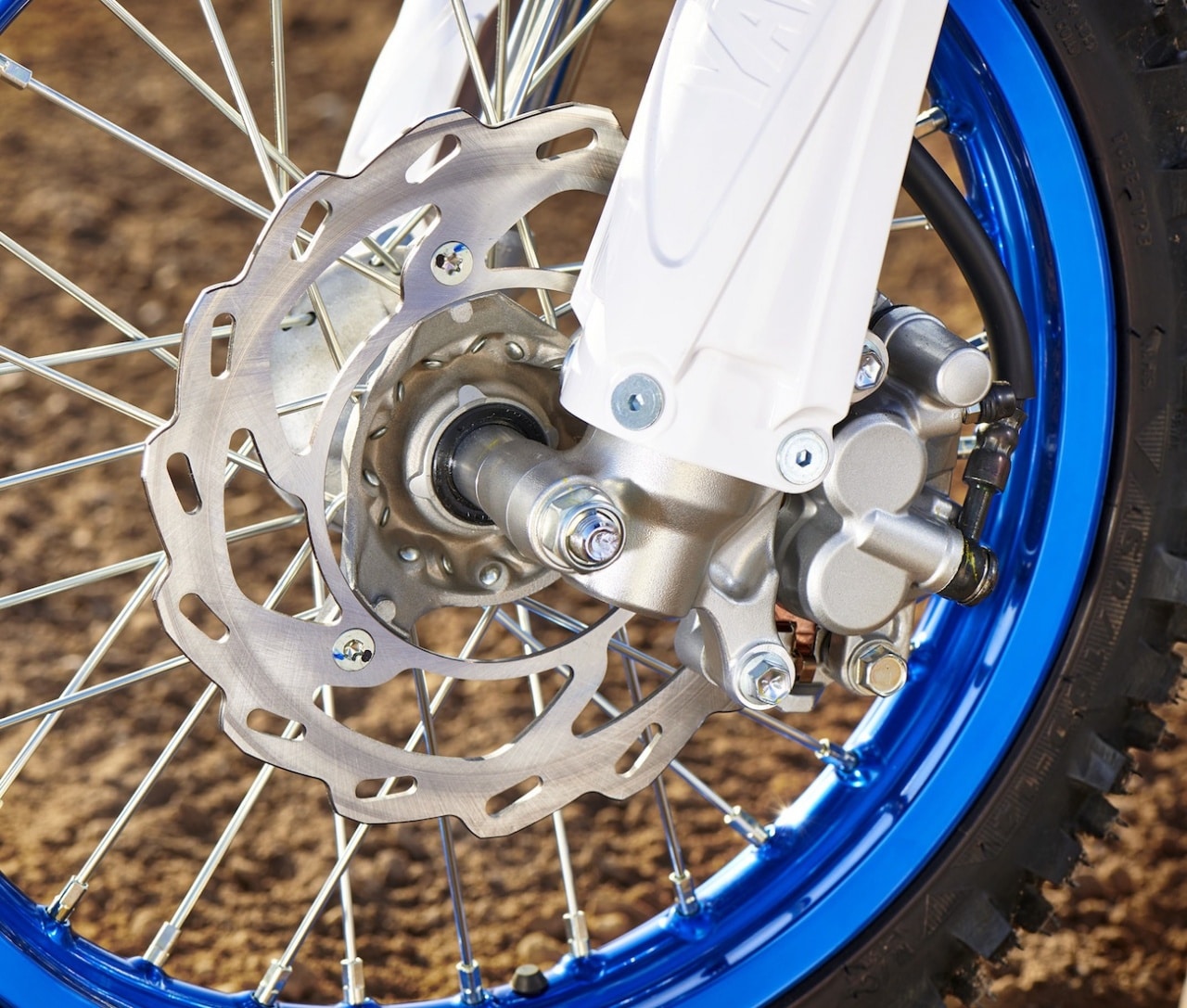
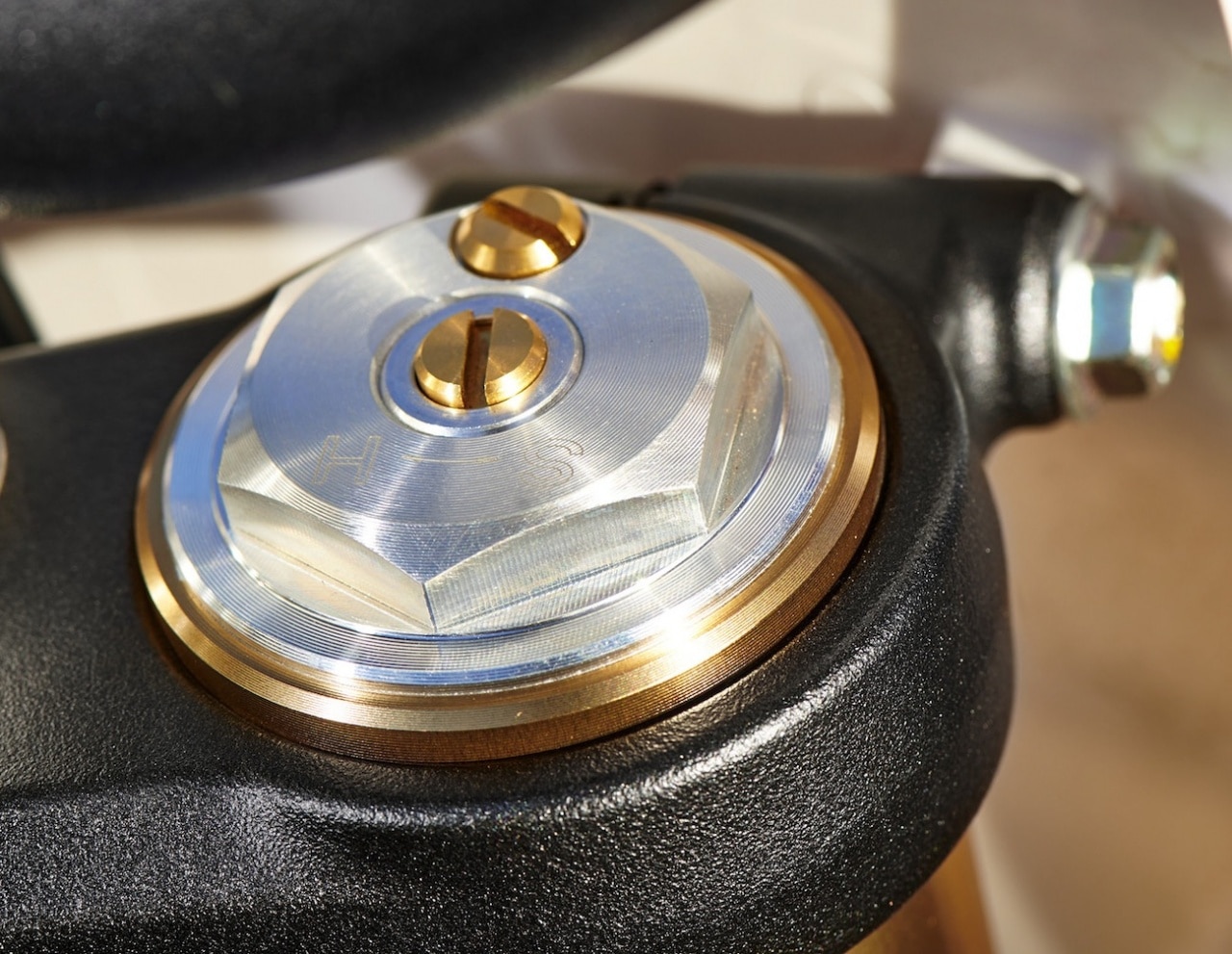



Comments are closed.